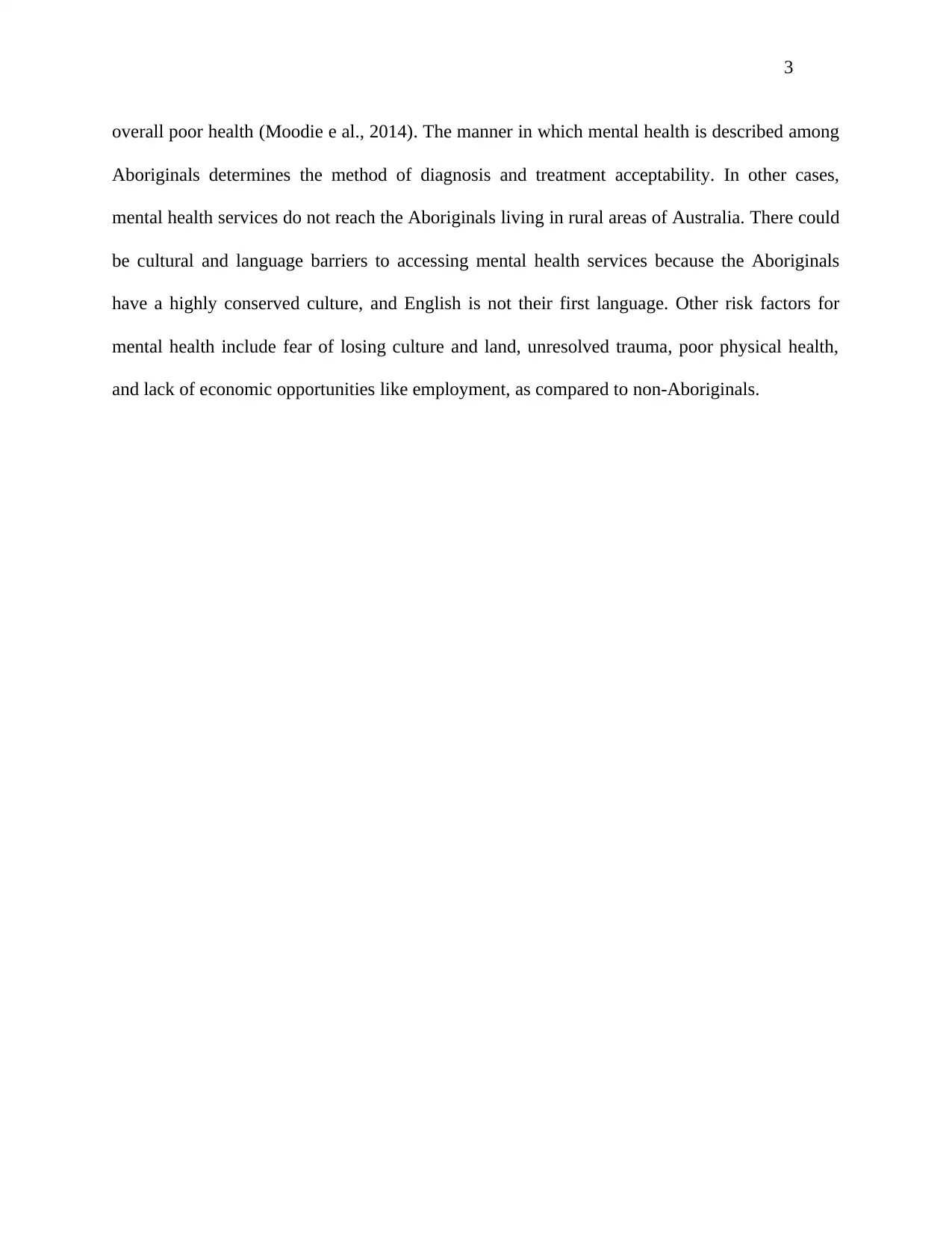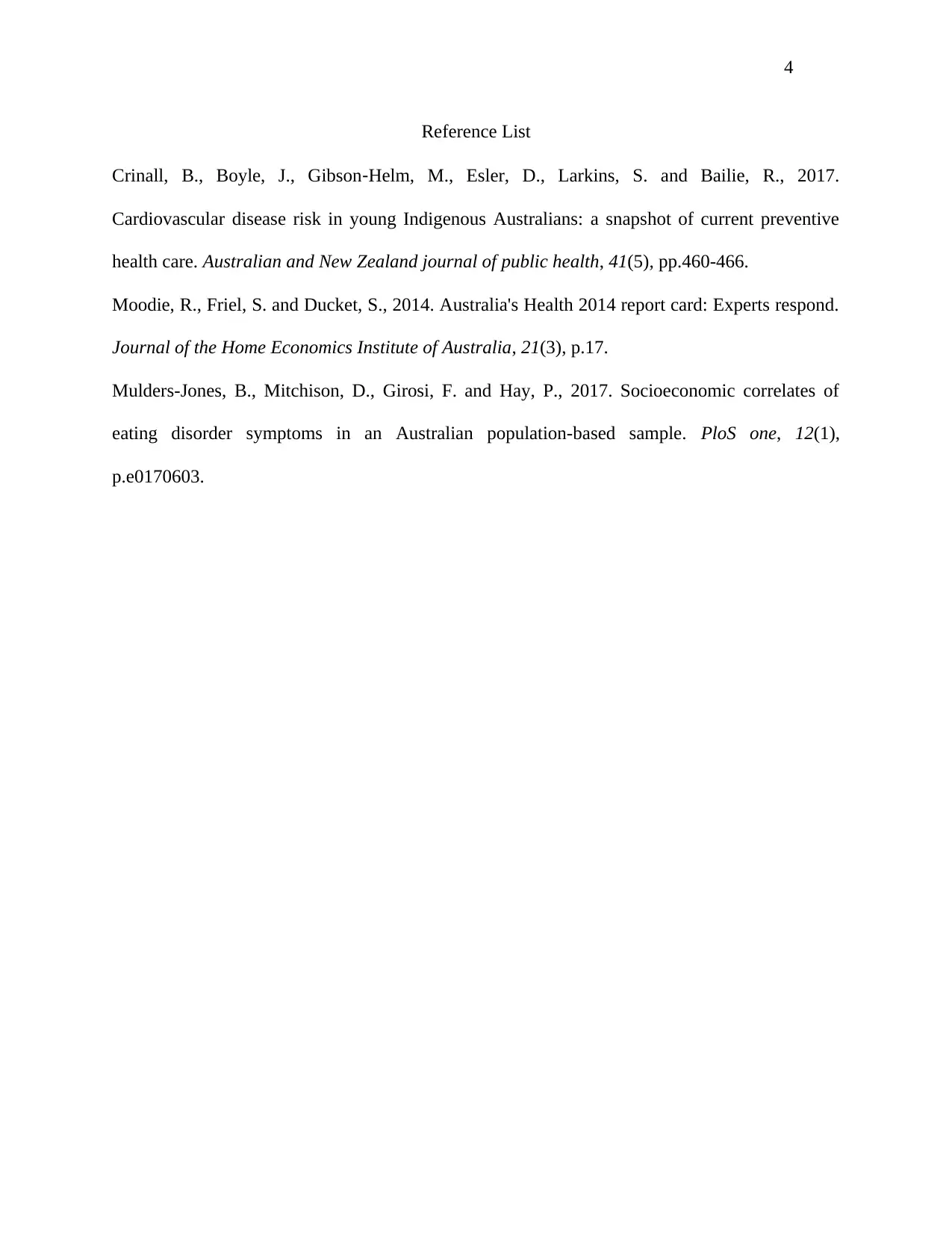Impact of Socioeconomic Factors on Aboriginal Health in Australia
VerifiedAdded on 2021/06/14
|4
|572
|49
Report
AI Summary
This report delves into the health disparities prevalent among Aboriginal Australians, highlighting the impact of socioeconomic factors on their overall well-being. The assignment explores the link between poverty, education, employment, and access to healthcare, emphasizing how these factors contribute to poorer health outcomes. It focuses on the increased prevalence of cardiovascular diseases and mental health issues, such as depression and anxiety, within the Aboriginal population. The report also analyzes the cultural and systemic barriers that hinder access to healthcare services, including language barriers and the preservation of traditional practices. Furthermore, the report discusses how the lack of economic opportunities and the unresolved trauma of the past contribute to the health crisis. The report references academic papers to support its findings and provide an informed overview of the situation. The report uses the latest research to highlight the key issues and to provide a comprehensive understanding of the challenges faced by Aboriginal Australians in the healthcare system.
1 out of 4










![[object Object]](/_next/static/media/star-bottom.7253800d.svg)